African giant millipedes (Archispirostreptus gigas) are 10-14” long, nocturnal, terrestrial invertebrates native to east Africa. They prefer to live on the floor of tropical forests, where they hide under fallen leaves and decaying wood.
African giant millipedes are a particularly large, robust millipede with a black-brown segmented body, with four tiny legs per segment. There is a set of antennae and simple eyes on the head.
African giant millipedes are a common beginner-level millipede because they’re handleable and easy to care for. With good care, they generally have a lifespan of 7-10 years.
Minimum recommended terrarium size for African giant millipedes
The enclosure size we recommend for a giant millipede is 36”L x 18”W x 18”H, or about 40 gallon tank. However, larger is better as long as the space is cluttered well. The enclosure must have a secure, tightly-fitted lid, or else your pet may escape!
Housing multiple millipedes in the same terrarium usually works well, but if you don’t want baby millipedes, it’s best to keep only one per enclosure. You will also want to consider a larger size enclosure if you plan to have more then one millipede.
Do African giant millipedes need UVB?
No, and they seem to avoid light in general. However, if you want to use live plants as part of your terrarium’s setup, you will want to consider a 6500K fluorescent or LED plant light. We recommend leaving these on on 8-12 hours/day depending on the time of year. Usually you will need less light in the winter and more light in the summer.
Best temperature for African giant millipedes
Giant millipedes should be kept around 70°F-75°F. If this is warmer than your room temperature, we recommend ceramic heat emitter or Arcadia deep heat projector to achieve the proper temperatures.
Use a digital probe thermometer to keep track of enclosure temperatures.
Best humidity levels for African giant millipedes
As a tropical species, giant millipedes do best with humidity levels between 70-80% during the day and higher at night. One of the best ways to do this is keeping the substrate appropriately damp. Simply pour water into 1/3 of the substrate until it’s moist, but not saturated or swampy. This gives the millipedes options of dampness levels they can be in. However, most keepers prefer to simply mist the enclosure 1-2x/day with a spray bottle of water.
You can keep track of ambient humidity levels with a digital probe hygrometer.
Best substrate for African giant millipedes
Giant millipedes do best with at least 3” of loose substrate on the floor of their enclosure. We recommend the following substrates for giant millipedes:
- Zoo Med Eco Earth
- Zoo Med ReptiSoil
- Exo Terra Plantation Soil
You will also want at least 1” of oak leaf litter (or similar) to provide something for the millipede to root around and hide in.
How to decorate an African giant millipede terrarium
Décor isn’t too important to millipedes, but it does add variety and makes the enclosure look nice. It also gives the millipede things to hide under, which is important to their wellbeing. Here are some décor ideas:
- small logs and branches
- cork flats
- live or artificial plants
- artificial ornaments
What to feed to an African giant millipede
African giant millipedes are primarily detritivorous, which means that they eat decomposing organic matter. Most of their nutrition should come from oak leaf litter, but they also should be provided pieces of fresh vegetables and fruits for variety, plus a protein source like fish flakes or dog kibble. Keep a piece of cuttlebone in the enclosure at all times as a calcium supplement.
Here are some fresh food ideas to feed:
- Cucumber
- Melon (leave some rind)
- Carrot
- Apples
Do millipedes need a water bowl?
Yes, it is best to provide a water bowl for your millipede. A small, shallow water dish is ideal. You can also drop pebbles into the dish to help prevent accidental drowning.
How to handle your African giant millipede
Although giant millipedes are more handleable than most invertebrates, they don’t appreciate petting and handling in the same way that dogs and cats do. When they are alarmed, they secrete a foul-smelling liquid, which can stain and may provoke an allergic reaction. Always wash your hands after handling your millipede, and we don't recommend you handle it too often.
*This care sheet contains only very basic information. Although it’s a good introduction, please further your research with high-quality sources. The more you know, the better you will be able to care for your pet!

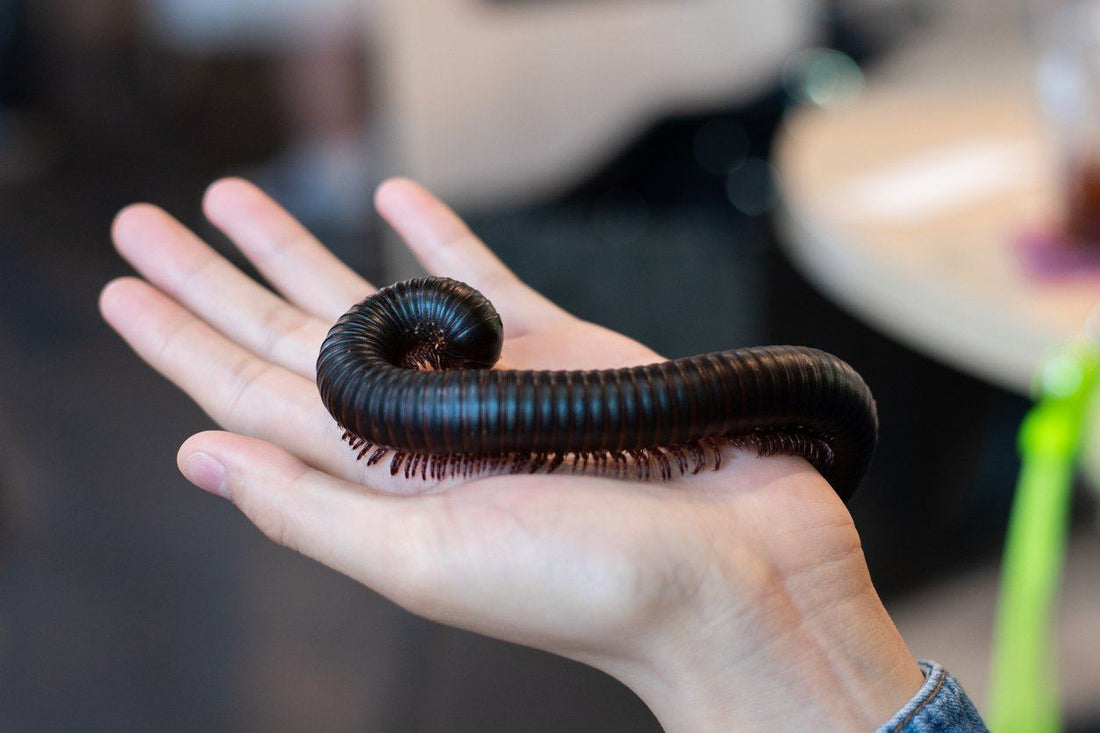


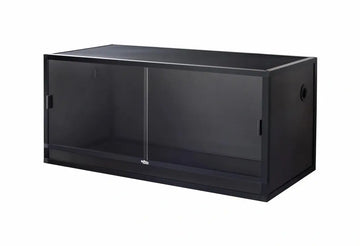

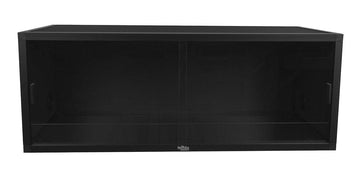

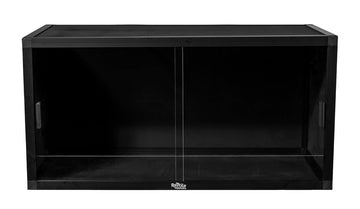
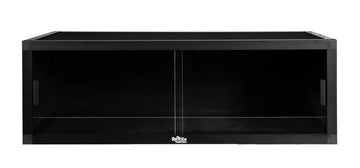


2 comments
Hi Tiffany — It’s best practice not to house African giant millipedes with other invertebrates. Besides, one giant millipede is plenty interesting on its own!
I work at a daycair and I was wanting to have a gient african centapead as a classroom pet…. what take mates can it have? I was thinking of a gient african snail?